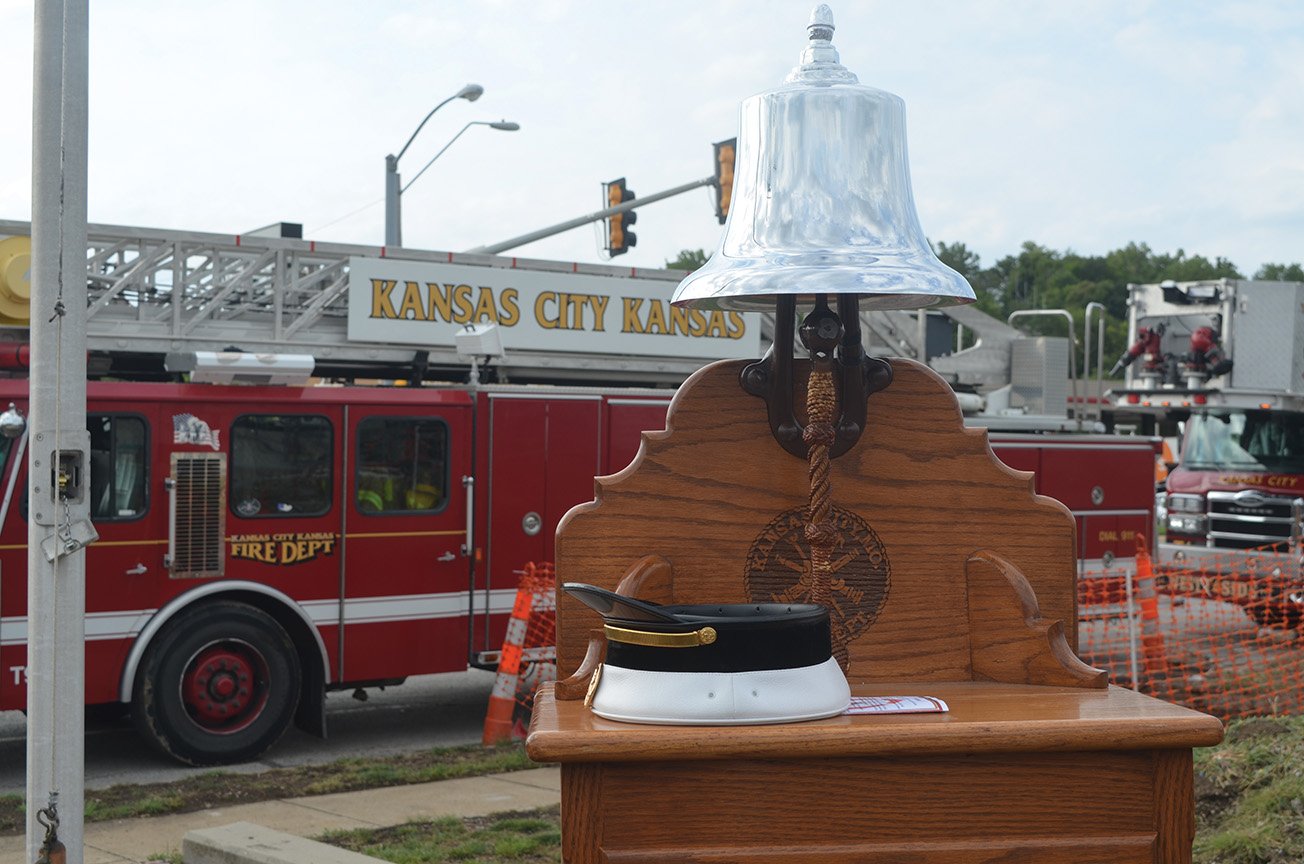Elizabeth Orosco
Northeast News
Community members, firefighters, and city leaders met Friday, August 16 to commemorate the 60th anniversary of the explosion that claimed the lives of five firemen and one civilian on Southwest Boulevard.
It was the second deadliest fire in Kansas City Fire Department history.
Those that gave their lives that day include Captain George E. Bartels, who had served for 12 years and three months, Firefighter Neal K. Owen, who served two years and three months, Driver Virgil L. Sams, who served six years and seven months, Captain Peter T. Sirna, who served 16 years, Firefighter Delbert W. Stone, who served two years, and civilian Francis J. Toomes, who was a friend of firefighters at Pumper 25 and died on the fire line with his friends.
Kansas City, Kansas and Kansas City, Missouri Fire Departments gathered at the memorial that was built at the site of the fire on land donated by the Union Pacific Railroad and dedicated in 1993.
John Simma, president of the International Association of Fire Fighters Local 64 said the deadly fire that happened on that site altered safety protocol for firemen.
“Many costly lessons learned in the history of fighting fires has changed the way we do things,” he said. “The National Fire Protection Association changed the way flammable liquids were stored at automotive service stations following this fire.”
Firefighting, he said, is inherently dangerous, but the mission is unchanged.
“Our job and mission has not changed in 60 years since that day,” he said. “We go to work knowing there is no safe post, no routine call or assignment. Let this memorial serve as a reminder that they gave their lives in service to the community. Our job is never done.”
Mayor Quinton Lucas said heroism still remains the same.
“Sixty years ago, people got up and didn’t know if they would get to go home,” he said. “They stood up to fight for and protect our community. The legacy of the fallen firefighters inspires us. We are made better each day because of your sacrifice.”
According to an in-depth article by Robert Burke, Firehouse Magazine contributing editor, the fatal fire began Tuesday, August 18, 1959.
At 8:20 a.m., the Kansas City, Kansas Fire Department received a report of a fire at the Continental Oil Co. on Southwest Boulevard.
The fire started on a loading rack at the combination bulk plant and service station. On the initial alarm, KCKFD dispatched three pumpers, then another two pumpers fifteen minutes later. At 9:30, two additional pumpers and all off-duty KCKFD firefighters were called.
The flames of the fire were visible for up to fifteen miles in all directions.
The first alarm for Kansas City, Missouri Fire Department was dispatched at 8:33, followed by five more before 10 a.m.
As firefighters battled the blaze, several dozen had been treated for heat exhaustion on the mid-August day, with temps in the 90s.
Ambulances stood by ready to assist.
The firefighters faced four 11-by-30 foot above-ground tanks resting on concrete cradles, each with a 21,000 gallon capacity.
Three of the tanks contained gasoline, the other kerosene. The tanks began to fail around 10 a.m. Tank 4, containing 15,655 gallons of premium gasoline, moved 94 feet from its cradle, across Southwest Boulevard, through a 13-inch brick wall, shooting burning gasoline across the street, into a line of firemen.
Some of these men were merely 74-feet from the tank upon rupturing.
After the explosion, Kansas City, Missouri put out a call for six reserve companies and requested assistance of all available ambulances. Station wagons served as makeshift ambulances.
Twenty-two firefighters were admitted to hospitals, five in critical condition, 40 were given first-aid at the scene, and an additional 35 were treated at hospitals and released.
Those who were uninjured continued to battle the blaze, eventually extinguishing it by 11 a.m.
After investigations and assessments, ultimately, the Southwest Boulevard fire changed the protocol for storing flammable liquids at automotive service stations as well as how the fires were fought.
The codes of the National Fire Protection Association (NFPA) were changed to require these storage tanks to be placed underground.
According to their website, the NFPA, established in 1896, is a global, self-funded, nonprofit organization devoted to eliminating death, injury, property and economic loss due to fire, electrical and related hazards.
The 300 codes and standards are designed to minimize the risk and effects of fire by establishing criteria for building, processing, design, service, and installation around the world.
The only video footage taken of the moment Tank 4 ruptured, captured by KMBC photographer Joe Adams on his personal camera, has been used in numerous training sessions to educate firefighters on how to fight flammable-liquid fires.
Despite the $30,000 in damage caused by this fire, those that gathered Friday echoed the same sentiment that the loss of life 60 years ago is immeasurable.



















